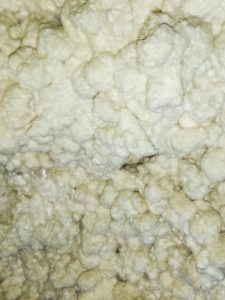
Mineral resources on the Aeolian islands in ancient times
Do you know the main productive activities in ancient times? What were the mineral resources on the Aeolian islands? Read the following descriptions jumping back into the past using different colours like the Aeolian stones.
Obsidian
First of all obsidian is a natural glass, it forms when the viscous magma quickly solidifies. But this mineral resource is really ancient. Mankind had used it since the end of the 6th millennium in the Neolithic Age. People preferred obsidian rather than flint in order to make tools.
Concerning the Aeolian islands you can find the pure obsidian only on Lipari. It is exactly in the area of Vallone del Gabellotto, near Canneto. Here there was an active quarry in the Neolithic Age. Workers quarried obsidian to obtain blades or elements, that were easier to carry. Other recent obsidian flows are Forgia Vecchia and Rocche Rosse. The last one was caused by an eruption on the north-eastern slope of Mount Pilato 800 years ago.
For instance, in Italy the obsidian deposits are located only on islands:
- Lipari
- Palmarola
- Pantelleria
- Monte Arci in Sardinia.
Therefore, first settlements on Lipari and Salina (Castellaro-Stentinello facies) started thanks to the trade of this raw material. Many objects of obsidian from Lipari have been found out in several places from Sicily and the Italian mainland to Dalmatia and Greece.
However, just a curiosity for our readers: the pure flint is lacking in the Aeolian archipelago; on Lipari, near the kaolin quarries, you can see a similar material but it is really inferior for its quality. So, inhabitants occasionally imported flint from Sicily.
Pumice, the mineral resource important until the Modern Age
Pumice is a volcanic product which is ejected from the volcano during explosions. It is very light due to its high porosity. So, pumice can float in water.
There are different types of pumice stone on Vulcano, Salina (Mount of Porri), but you can observe a great number of high quality pumice stones on Lipari.
The crater of Mount Pilato particularly consists of pumice deposits, whose export determined the main economic development until 2007. Later, the mining industry stopped its activity. But the events linked with its closure are truly problematic. They need, in fact, a deeper analysis.
So, in the Greek and Roman periods pumice was used for several reasons:
- it served as abrasive in producing marbles and metals to sharpen different tools
- construction companies used it as a component in cement to lighten vaults
- pumice was used in cosmetics and personal care products including for cleaning your teeth and getting a smooth skin
- it was used in medicine to heal wounds.
In addition, pumice was appreciated as absorbent component and insulation in the Modern Age.
Kaolin
 The main constituent in kaolin is hydrous aluminum silicate. Kaolin mostly forms when some events of secondary volcanism occur.
The main constituent in kaolin is hydrous aluminum silicate. Kaolin mostly forms when some events of secondary volcanism occur.
For example, on Lipari, close to the district of Quattropani, you can visit the quarries, where kaolin had been extracted since the Greek Age. Local artisans applied it for creating and painting pottery, among them the Painter of Lipari is worth to be mentioned (end of the 4th century – second half of the 3rd century BC).
Between 1950 and 1970 the mining industry was carried out by employing new systems, although it ended because it wasn’t productive. After that, today these quarries are an interesting Geo-mining Park run by the wine estate Tenuta of Castellaro.
Most importantly, the landscape shows white clay formations with some intense red, yellow or violet shades. These colours are due to fumaroles, which are still visible along the path towards the sea until the district of Palmeto.
Moreover, the name kaolin derives from the Chinese (Gaoling) and means high ridge. That is a reference to the hill in China rich in kaolin where it was originally used for the manufacture of porcelain.
Two mineral resources: sulphur and alum
Sulphur and alum were certainly used too. They were among the most important economic resources on the islands. You can see on Vulcano, close to the eastern sea stacks and on the Crater La Fossa.
Sulphur
It was collected by removing the fumarole soil. Sulphur was used in its natural condition, that is without a combustion. There were several uses:
- purifying religious rites
- agriculture
- handicraft
- medicine for unguents
- metallurgy.
 Alum
Alum
While alum was obtained by extracting from large caves where an aquifer on the walls created some stalactites of this mineral and different salts. Alum was employed:
- in tanning leather
- to paint cloth
- in medicine as haemostatic
- as fire generator.
In conclusion, the mining industry of alum was active until 1888, but it stopped its activity because of a strong eruption of the volcano on Vulcano. While the sulphur was quarried for a short period. Today you can observe a building similar to a castle with towers and crenellation on the island of Vulcano. This is the house of the Scottish family named Stevenson, who bought the island and took advantage of the mineral resources until the last eruption.
Luana La Fauci (for the translation Brigida Carrubba)



